Lathrocasis tenerrima
Leigh JohnsonIntroduction
Lathrocasis tenerrima is a small, delicate, annual plant that is easily overlooked in nature. This species is tetraploid (i.e., it has four sets of chromosomes, with nine in each set), self-pollinating, and occurs at mid elevations (1500-2750 meters) in the Great Basin and Rocky Mountain regions of the Western United States. This species represents an interesting phylogenetic lineage that diverged early in the evolution of tribe Gilieae, yet either has not radiated like the species-rich and closely related Gilia, and Allophyllum+Collomia+Navarretia clades, or has lost any close relatives through extinction. The name Lathrocasis is derived from the Greek lathro- (= hidden, secret) and kasis (= sister), and was coined because the relationships of this species have been obscure; tenerrima is derived from the Latin tener, which means delicate or soft, in reference to the fine, threadlike pedicels of this species (Johnson and Weese, 2000).
Characteristics

Lathrocasis tenerrima. Picture on left shows two of five corolla lobes with veins and stamen attachment; in middle is a dried, pressed flower from an herbarium sheet showing fusion of sepals into calyx tube; on right is a mature fruit showing the three seeds. © 2008
Lathrocasis tenerrima is distinguished from other Polemoniaceae by a combination of characters (Johnson and Weese, 2000; Johnson et al., 2004). These include the mostly entire leaves, widely diverging branches with threadlike pedicels that angle 90 degrees or more from the stem, being uniformly covered with short, gland-tipped hairs, minute funnelform flowers with a simple veination pattern, stamens equally inserted approximately mid-tube, one seed in each fruit chamber (three seeds per fruit), and seeds with a warty covering that produces mucilaginous (sticky) threads when wet.

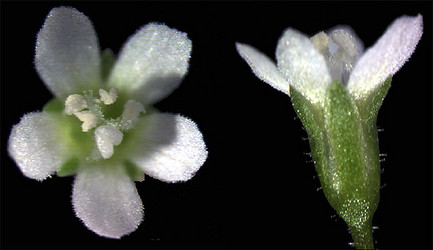
Two views of live flowers of Lathrocasis tenerrima. The flowers are about 3 mm long. © 1997
This species is easily identified by paying attention to the details of its features. Its flowers are very small, however, so a hand lens or other means of magnification are essential to study the plant. Some written descriptions for the species are misleading. For example, the flowers have been described as campanulate (cup-shaped) and the calyx tube being split more than half way to the base (i.e., lobes longer than the tube); Its glands and pollen grains have also been mischaracterized. Among Polemoniaceae, this species is most likely to be confused with Aliciella micromeria, which is also small flowered and has a similar overall appearance with very fine branches and diverging flower stalks. Aliciella micromeria, however, usually has several lobes on each side of its leaves, lacks chloroplasts in its glands, and has seeds that lack warts (having well defined cell wall boundaries instead) and do not become sticky when wet.
Geographic Distribution
Lathrocasis tenerrima is distributed in parts of the Great Basin and Rocky Mountain floristic provinces of western United States. Its range extends north from California, Nevada, Utah, and Colorado into Oregon, Idaho, Wyoming, and Montana and from Wyoming west to the Cascades of Oregon and the Sweetwater Mountains of Mono County, California. Though the type specimen (the original collection the species is named from) is listed as being from "Utah", it was collected in 1869 when the Utah territory included parts of what is now Wyoming, and it most likely was collected in what is now that state (Johnson and Weese, 2000).
Phylogenetic Relationships
Lathrocasis tenerrima has been allied with numerous species over the years, but seemingly as an afterthought rather than due to direct study of this species. Chloroplast DNA sequences provided the first firm evidence suggesting L. tenerrima be removed from the genus Gilia (Johnson and Soltis, 1995). Subsequent studies of morphology and further DNA sequence analysis further support removing this speceis from Gilia, but are not strong in anchoring this genus to a single sister group (Johnson and Weese, 2000; Johnson et al. 2004, 2008). Lathrocasis is either sister to Gilia, to a clade composed of Allophyllum, Collomia, and Navarretia, or to both of these groups combined.
Taxonomy
Lathrocasis L.A. Johnson, Aliso 19:67. 2000.
Lathrocasis tenerrima (A. Gray) L.A. Johnson, Aliso 19:67. 2000.
Basionym: Gilia tenerrima A. Gray, Proc. Amer. Acad. Arts 8: 277. 1870.—Type: USA, Utah [Wyoming]: Evanston, July 1869, Watson 922. (Holotype: GH; isotypes: NY, YU).
Synonyms: Navarretia tenerrima (A. Gray) Kuntze, Revis. Gen. Pl. 2: 433. 1891. Allophyllum tenerrimum (A. Gray) V.E. Grant, Phytologia 84: 79. 1998 [1999]. Tintinabulum tenerrimum (A. Gray) A.G. Day & V.E. Grant, Phytologia 84: 377. 1998 [1999].
References
Grant, V. 1998 [1999]. Classification of the genus Gilia (Polemoniaceae). Phytologia 84:69–86.
Grant, V., and A.G. Day. 1998 [1999]. Transfer of some species from Gilia to Allophyllum and Tintinabulum, and the effects of the transfer on the generic definition of Gilia (Polemoniaceae). Phytologia 84:368–382.
Johnson, L.A. and D.E. Soltis. 1995. Phylogenetic inference in Saxifragaceae sensu stricto and Gilia (Polemoniaceae) using matK sequences. Annals of the Missouri Botanical Gardens 82:149–175.
Johnson, L. A., and T. L. Weese. 2000. Geographic distribution, morphological and molecular characterization, and relationships of Lathrocasis tenerrima Polemoniaceae). Western North American Naturalist 60: 355-373.
Johnson, L. A., L. M. Chan, T. L. Weese, L. D. Busby, and S. McMurry. 2008. Nuclear and cpDNA sequences combined provide strong inference of higher phylogenetic relationships in the phlox family (Polemoniaceae). Molecular Phylogenetics and Evolution 48:997-1012.
Johnson, L. A., K. H. Holt, and J. M. Porter. 2004. Seed surface sculpturing and its systematic significance in Gilia (Polemoniaceae) and segregate genera. International Journal of Plant Sciences 165:153-172.
Porter, J. M., and L. A. Johnson. 2000. A phylogenetic classification of Polemoniaceae. Aliso 19:55-91.
Information on the Internet
- Western North American Naturalist. Link to PDF Monograph for Lathrocasis tenerrima (Johnson and Weese, 2000).
Title Illustrations

| Scientific Name | Lathrocasis tenerrima |
|---|---|
| Location | Nevada |
| Specimen Condition | Live Specimen |
| Identified By | Leigh Johnson |
| Image Use |
 This media file is licensed under the Creative Commons Attribution-NonCommercial License - Version 3.0. This media file is licensed under the Creative Commons Attribution-NonCommercial License - Version 3.0.
|
| Copyright |
© 2004

|
| Scientific Name | Lathrocasis tenerrima |
|---|---|
| Location | USA: Sevier Co., Utah. Old Woman Plateau. |
| Life Cycle Stage | senescence |
| Collection | 01-027 |
| Collector | Leigh A. Johnson |
| Image Use |
 This media file is licensed under the Creative Commons Attribution-NonCommercial License - Version 3.0. This media file is licensed under the Creative Commons Attribution-NonCommercial License - Version 3.0.
|
| Copyright |
© 2001

|
| Scientific Name | Lathrocasis tenerrima |
|---|---|
| Specimen Condition | Live Specimen |
| Image Use |
 This media file is licensed under the Creative Commons Attribution-NonCommercial License - Version 3.0. This media file is licensed under the Creative Commons Attribution-NonCommercial License - Version 3.0.
|
| Copyright |
© 1997

|
About This Page

Brigham Young University, Provo, Utah, USA
Correspondence regarding this page should be directed to Leigh Johnson at
Page copyright © 2009
 Page: Tree of Life
Lathrocasis tenerrima.
Authored by
Leigh Johnson.
The TEXT of this page is licensed under the
Creative Commons Attribution License - Version 3.0. Note that images and other media
featured on this page are each governed by their own license, and they may or may not be available
for reuse. Click on an image or a media link to access the media data window, which provides the
relevant licensing information. For the general terms and conditions of ToL material reuse and
redistribution, please see the Tree of Life Copyright
Policies.
Page: Tree of Life
Lathrocasis tenerrima.
Authored by
Leigh Johnson.
The TEXT of this page is licensed under the
Creative Commons Attribution License - Version 3.0. Note that images and other media
featured on this page are each governed by their own license, and they may or may not be available
for reuse. Click on an image or a media link to access the media data window, which provides the
relevant licensing information. For the general terms and conditions of ToL material reuse and
redistribution, please see the Tree of Life Copyright
Policies.
- First online 21 April 2004
- Content changed 02 January 2009
Citing this page:
Johnson, Leigh. 2009. Lathrocasis tenerrima. Version 02 January 2009. http://tolweb.org/Lathrocasis_tenerrima/22996/2009.01.02 in The Tree of Life Web Project, http://tolweb.org/





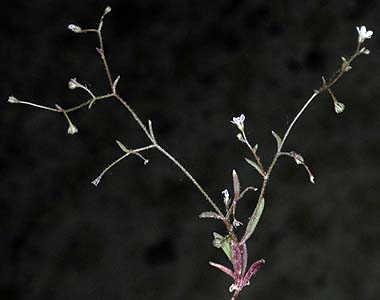
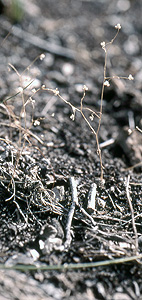
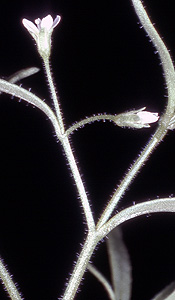
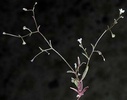




 Go to quick links
Go to quick search
Go to navigation for this section of the ToL site
Go to detailed links for the ToL site
Go to quick links
Go to quick search
Go to navigation for this section of the ToL site
Go to detailed links for the ToL site